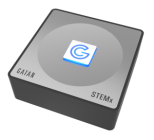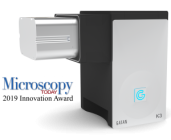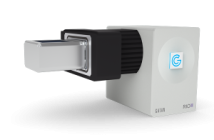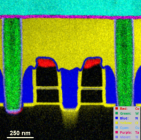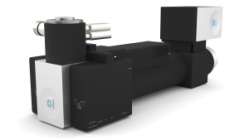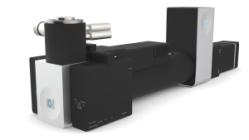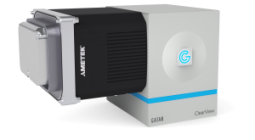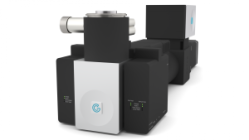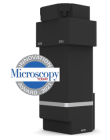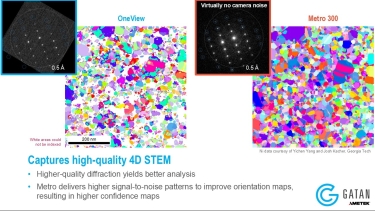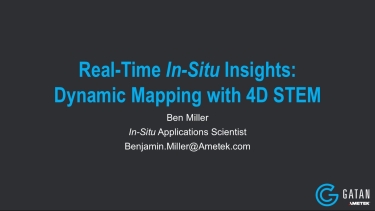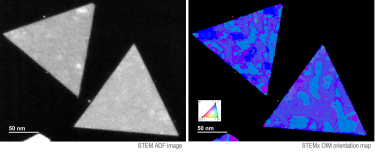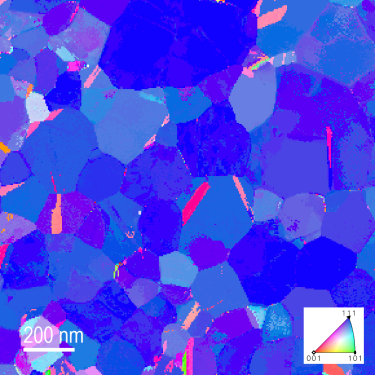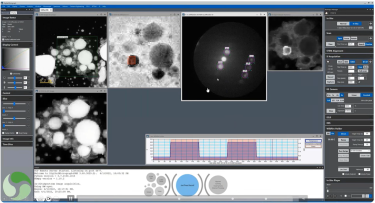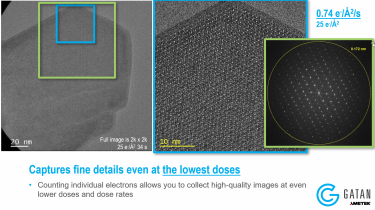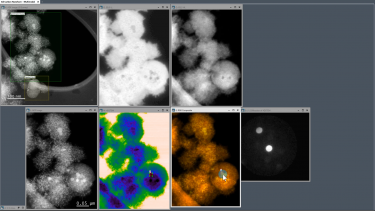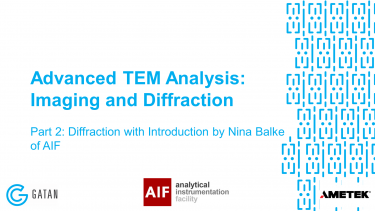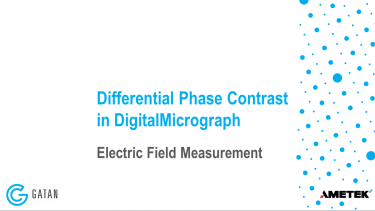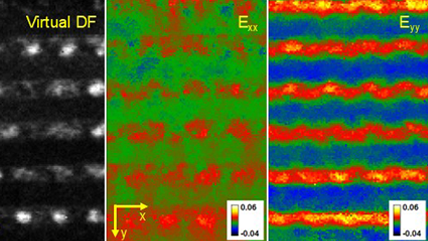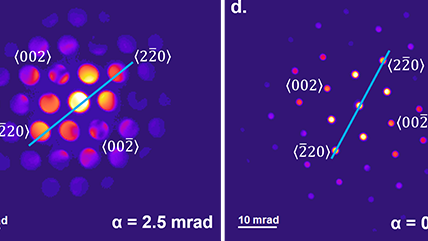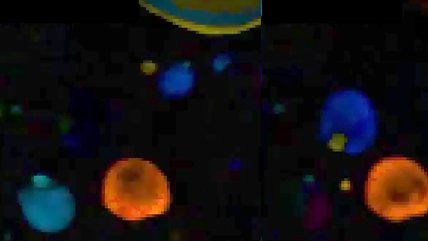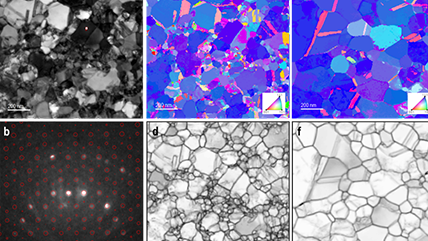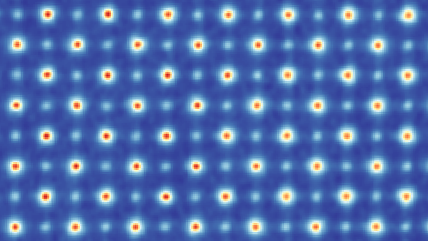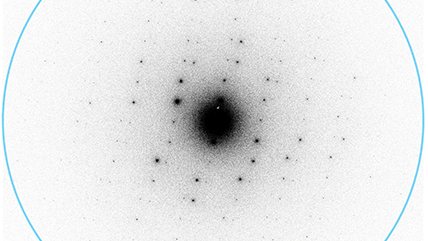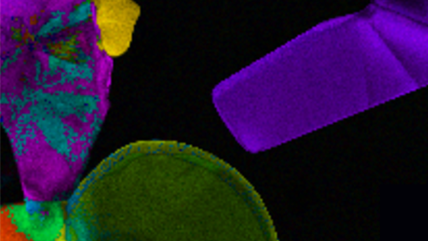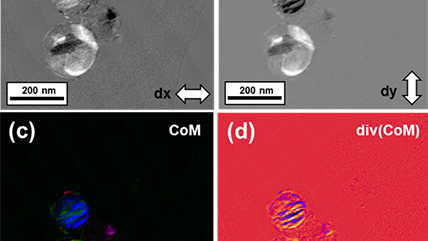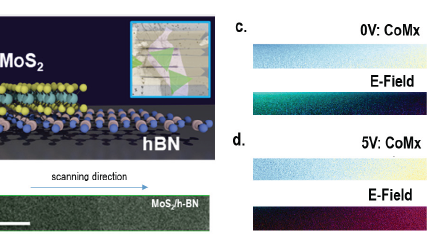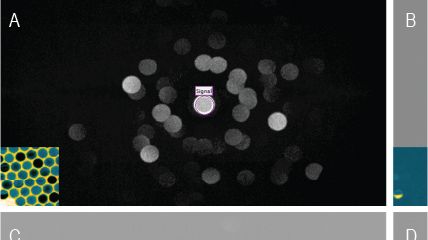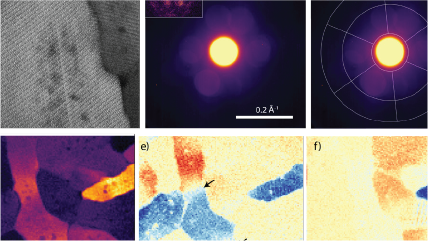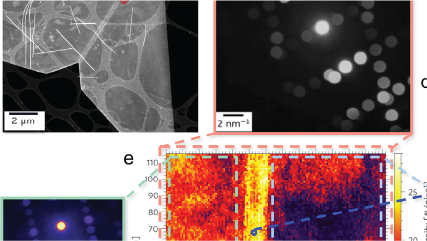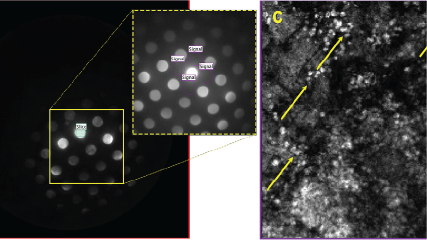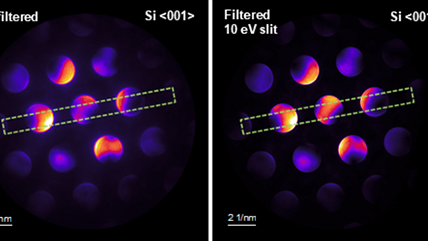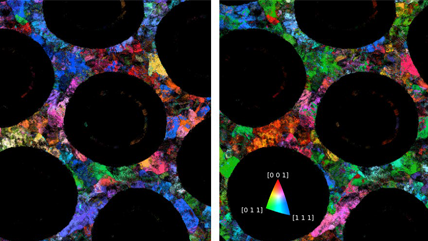WHAT IS 4D STEM?

In scanning transmission electron microscopy (STEM), the electron beam is focused on an electron transparent specimen to make a probe from a few nanometers down to nearly atomic dimensions. Electrons interact with the specimen, and once they are scattered, different types of signals can be measured:
- X-rays (EDS)
- Backscattered electrons
- Light (cathodoluminescence)
- Auger electrons
- Secondary electrons
- Inelastically scattered electrons (energy loss spectroscopy)
- Elastically scattered electrons (diffraction)
In 4D STEM, the probe is rastered on the specimen in a 2D array. At each probe position, a 2D diffraction pattern is imaged on a pixelated detector, thus generating a 4D data cube that can be further analyzed.
Video courtesy of Colin Ophus, Molecular FoundryUSES OF 4D STEM
Below are examples of the boundless possibilities of 4D STEM applications in materials science. We encourage you to explore the extensive examples and detailed information on each method in Microscopy and Microanalysis 25, 563-582, 2019
- Virtual imaging – Generate virtual SAED or virtual BF/DF images from a single 4D STEM dataset
- Orientation mapping – Study the crystallographic orientation of materials at very fine scales
- Strain mapping – Map strain distribution within materials via measuring local lattice distortions from diffraction patterns in the 4D data cube
- Differential phase contrast – Map local electric and magnetic fields by measuring subtle shifts in the transmitted electron beam's phase at each scan point
- Ptychography – Reconstruct the phase and amplitude of the electron wave passing through the sample to create ultra-high-resolution images with enhanced contrast and structural detail
ADVANTAGES OF 4D STEM
| Capability | Advantage |
|---|---|
| High spatial and angular resolution | Enables materials characterization at nanometer or atomic scale, with high accuracy |
| Versatile data acquisition and flexible imaging modes | Captures full diffraction pattern at each scan position, enabling various post-processing analyses as listed above |
| Multimodal data acquisition | eaSI technology combines 4D STEM with EELS and EDS to comprehensively understand the specimen under study |
| Compatible with in-situ experiments | Adding dimension of time (5D dataset) enables real-time monitoring of structural changes under various conditions |
APPLICATIONS
POSTERS
|
Using open-source Python packages in DigitalMicrograph for analyzing 4D STEM - IMC 2023 |
|
|

